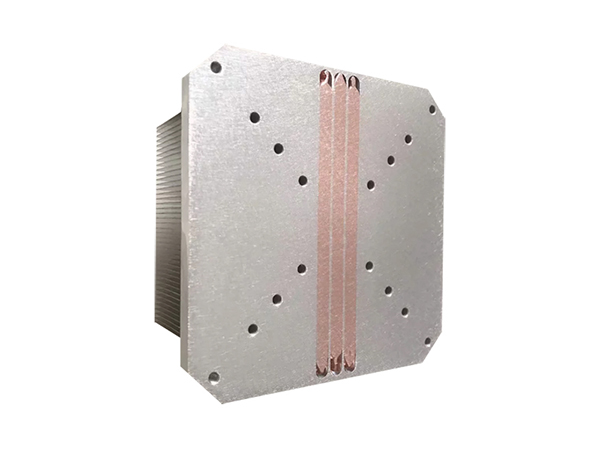Principle of heat pipe:
The heat pipe uses evaporation refrigeration, which makes the temperature difference between the two ends of the heat pipe very large, so that the heat can be transmitted quickly. Generally, the heat pipe is composed of shell, wick and end cover. The inside of the heat pipe is pumped into a negative pressure state and filled with a proper liquid, which has a low boiling point and is easy to volatilize. The wall of the tube is provided with a liquid absorption core, which is composed of a capillary porous material. One section of the heat pipe is the evaporation end, and the other section is the condensation end. When one section of the heat pipe is heated, the liquid in the capillary evaporates rapidly, and the steam flows to the other end under a small pressure difference, and releases the heat, and recondenses into the liquid. The liquid flows back to the evaporation section along the porous material by the capillary force, so the heat is transmitted from one end of the heat pipe to the other end. This cycle is fast, and the heat can be transmitted continuously.
Basic working process:
A typical heat pipe is composed of a shell, a wick and an end cover. After a negative pressure of 1.3 × (10 negative 1-10 negative 4) Pa is drawn into the pipe, an appropriate amount of working liquid is filled, and the wick capillary porous material close to the inner wall of the pipe is filled with liquid and sealed. One end of the pipe is the evaporation section (heating section) and the other end is the condensation section (cooling section). According to the application needs, an insulation section can be arranged between the two sections. When one end of the heat pipe is heated, the liquid in the wool core evaporates and vaporizes. The steam flows to the other end under a small pressure difference to release heat and condense into a liquid. The liquid flows back to the evaporation section along the porous material by the capillary force. The heat is transferred from one end of the heat pipe to the other. The heat pipe includes the following six parts in the process of heat transfer
The main process of correlation:
(1) The heat is transferred from the heat source through the wall of the heat pipe and the wick filled with the working liquid to the (liquid vapor) interface;
(2) The liquid evaporates on the (liquid vapor) interface in the evaporation section;
(3) The steam in the steam chamber flows from the evaporation section to the condensation section;
(4) The steam condenses on the steam liquid interface in the condensation section:
(5) The heat is transferred from the (vapor-liquid) interface to the cold source through the suction core, liquid and pipe wall
(6) In the wick, the condensed working liquid returns to the evaporation section due to capillary action.

